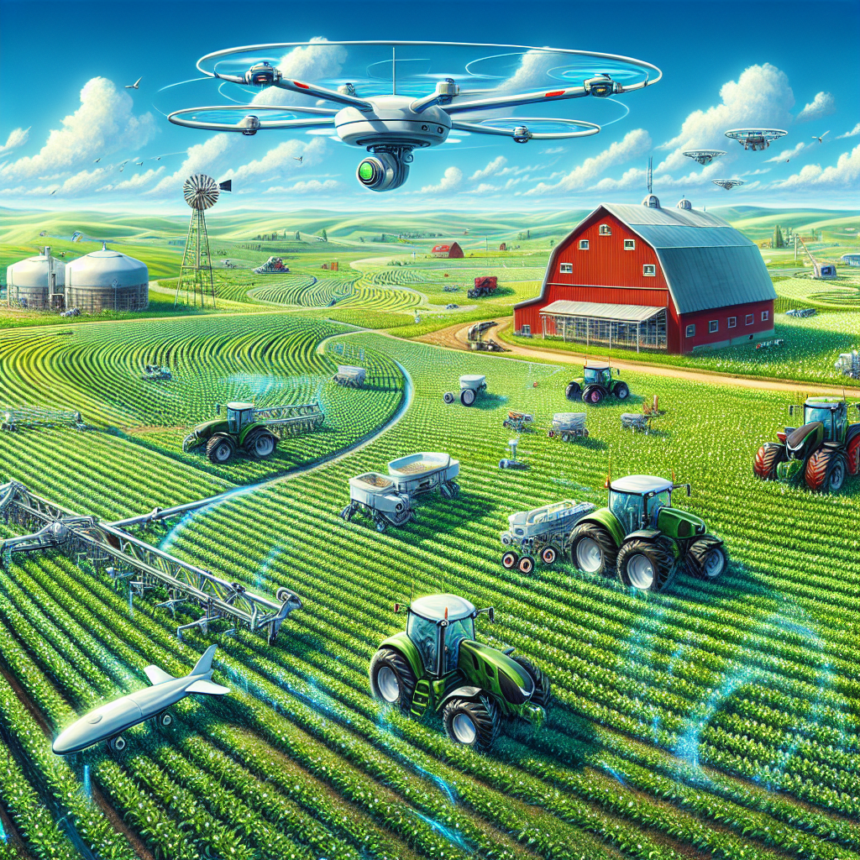Agriculture, a cornerstone of civilization, is undergoing a revolutionary transformation, predominantly shaped by the advent of precision farming. This innovative approach employs technology and data-driven methodologies to optimize farm operations, thereby increasing yields, enhancing sustainability, and making better use of natural resources. As the global population continues to grow, the demand for food rises exponentially, making precision farming a crucial solution to the challenges faced by the agricultural sector.
What is Precision Farming?
Precision farming, also known as precision agriculture, involves the use of advanced technologies, including satellite imagery, IoT (Internet of Things) devices, drones, and data analytics, to monitor and manage field variability in crops. By leveraging these tools, farmers can tailor their practices to specific locations within their fields, maximizing productivity while minimizing waste. The goal is to ensure that each crop receives the precise amount of water, nutrients, and care it needs to thrive.
Key Components of Precision Farming
-
Data Collection: At the heart of precision farming is the data. Sensors and satellite imagery collect a vast array of information about soil health, moisture levels, temperature, and crop conditions. This data helps farmers understand the unique characteristics of their fields.
-
Geographic Information Systems (GIS): GIS technology enables farmers to visualize and analyze the data collected. It helps in mapping the variabilities within a farm, allowing for tailored treatments that promote optimal growth.
-
Variable Rate Technology (VRT): This technology allows farmers to apply fertilizers and pesticides at variable rates across different areas of the field, based on specific needs rather than a blanket approach. This means less waste and greater efficiency.
-
Drones and Aerial Imagery: Drones equipped with high-resolution cameras can provide real-time monitoring of crops. They help in assessing plant health, detecting pest infestations, and even analyzing crop maturity.
- Soil Sensors: These devices provide real-time data on soil conditions, allowing farmers to make informed decisions about irrigation and nutrient applications.
Benefits of Precision Farming
1. Increased Efficiency
Precision farming dramatically reduces inputs such as water, fertilizers, and pesticides. By applying resources only where necessary, farmers can maintain healthier crops while saving money and minimizing environmental impact.
2. Higher Yields
With targeted applications of water and nutrients, crops can thrive like never before. This precision ultimately leads to higher yields, valuable in meeting the growing food demand globally.
3. Sustainability
By reducing the quantities of chemicals and water used in agriculture, precision farming promotes sustainable practices. This contributes to protecting biodiversity and reducing the harmful effects of runoff, ensuring cleaner soil and water systems.
4. Cost-Effective
Though the initial investment in technology might be significant, the long-term savings accrued from better yields and lower input usage provide financial benefits that outweigh costs. Farmers can also predict costs more accurately and plan better for the future.
5. Better Risk Management
Precision farming enables farmers to predict and manage risks more effectively. By analyzing weather patterns and crop conditions, farmers can make proactive decisions that help avoid losses due to adverse events.
Challenges to Adoption
Despite its many benefits, the adoption of precision farming is not without challenges. High initial costs, lack of technical knowledge, and limited access to technology can hinder small-scale farmers. Addressing these challenges through subsidies, training programs, and better technological infrastructure will be key to ensuring that precision farming can benefit a broader range of agricultural producers.
Future of Precision Farming
As technology continues to advance, the potential of precision farming will only increase. The integration of artificial intelligence, machine learning, and robotics could revolutionize further how we approach agriculture. By combining these technologies with precision farming’s data-driven techniques, we can expect a future where farming is not only efficient and sustainable but also resilient to the challenges posed by climate change and population growth.
FAQs
1. What is the primary goal of precision farming?
The primary goal of precision farming is to optimize agricultural practices by using data and technology to make informed decisions that enhance crop yields while minimizing resource use and environmental impact.
2. How does precision farming save money for farmers?
By using variable rate technology and targeted input applications, farmers can reduce waste and lower their operational costs, ultimately leading to better profitability.
3. Is precision farming suitable for all types of farms?
While precision farming can benefit a wide range of agricultural operations, its initial investment and complexity may pose challenges for small-scale farms. However, as technology becomes more accessible, its application may broaden across various farm sizes.
4. What technologies are commonly used in precision farming?
Common technologies include GPS, drones, soil sensors, and geographic information systems (GIS) that help monitor and analyze farming conditions.
5. Can precision farming help mitigate climate change?
Yes, precision farming can play a role in mitigating climate change by improving resource efficiency, reducing chemical runoff, and promoting sustainable agricultural practices.









